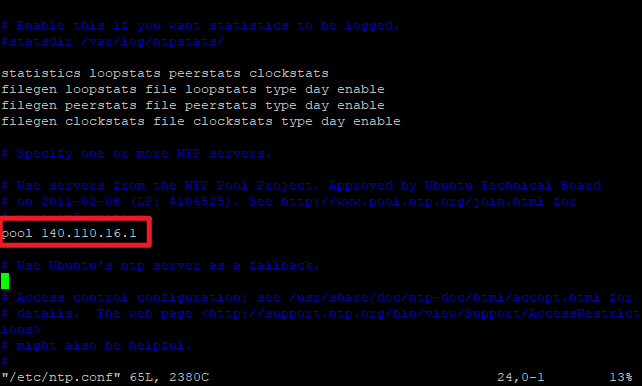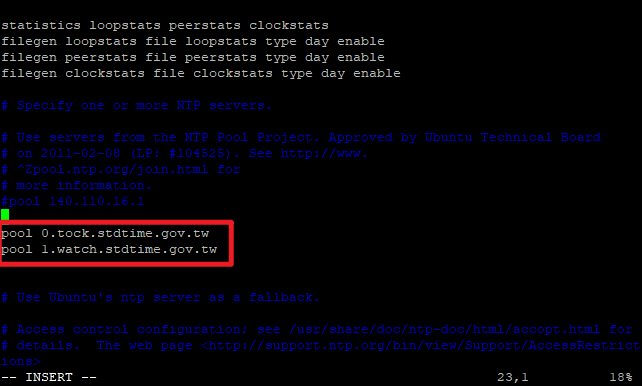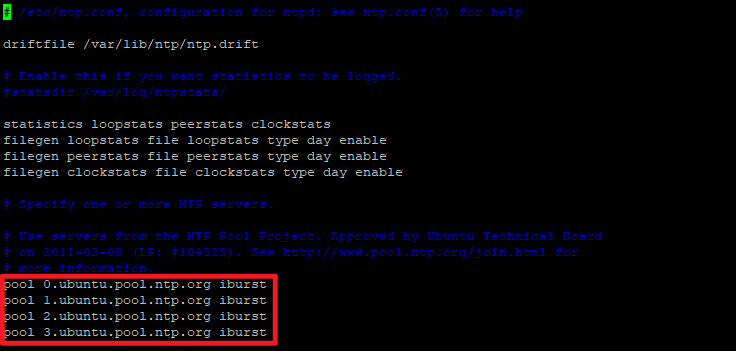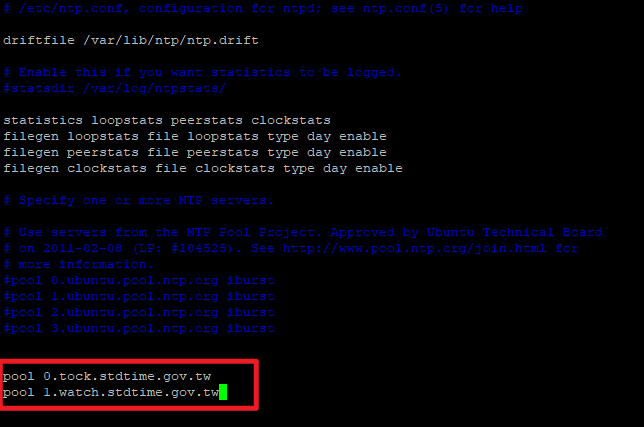HowTo: Configure time synchronization with an NTP server
The following instructions describe how to set up a specific time zone for a VCS instance so that it can be automatically calibrated: CentOS instances use native commands to set up the time zone, while Ubuntu instances use an external time server to set up the time zone.
CentOS VCS instances
Step 1. Connect to the VCS instance.
Step 2. Enter the following command to set the time zone to Taiwan.
sudo timedatectl set-timezone Asia/Taipei
- Step 3. Enter the following command to query the time zone of the VCS instance.
date

Ubuntu VCS instances (18.04 version)
Step 1. Connect to the VCS instance.
Step 2. Enter the following command to update the package.
sudo apt-get update
- Step 3. Enter the following command to install the NTP package.
sudo apt-get install -y ntp
- Step 4. Enter the following command to modify the configuration file ➡️ and then type "i" to enter edit mode, you will see the following screen:
sudo vim /etc/ntp.conf
➡️ Type "#" in front of the content in the red box below to hide a default data.

➡️ Enter the external NTP server in the same format as below ➡️ press the "esc" key to exit edit mode when finished ➡️ enter ":wq!" to save the file and leave

- Step 5. Enter the following command to restart NTP to update the settings.
sudo systemctl restart ntp
Ubuntu VCS instances (16.04 version)
Step 1. Connect to the VCS instance.
Step 2. Enter the following command to install the NTP package.
sudo apt-cache policy ntp
sudo apt install -y ntp=1:4.2.8p4+dfsg-3ubuntu5
- Step 3. Enter the following command to modify the configuration file ➡️ and then type "i" to enter edit mode, you will see the following screen:
sudo vim /etc/ntp.conf
➡️ Type "#" in front of the content in the red box below to hide four default data.

➡️ Enter the external NTP server in the same format as below ➡️ press the "esc" key to exit edit mode when finished ➡️ enter ":wq!" to save the file and leave

- Step 4. Enter the following command to restart NTP to update the settings.
sudo systemctl restart ntp